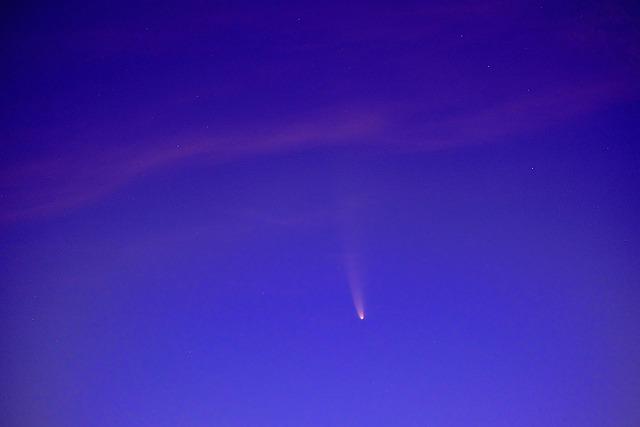Scientists around the world are racing to study a rare comet originating from the far reaches of deep space, offering a unique glimpse into the early solar system. As this enigmatic visitor speeds through our cosmic neighborhood, researchers are seizing the opportunity to analyze its composition, trajectory, and origins. The findings could shed light on the building blocks of planets and the mysteries of the universe’s formation, prompting an unprecedented global collaboration in space science. This article explores why the scientific community is rushing to unlock the secrets of this interstellar traveler.
The Urgency Behind the Race to Study the Mysterious Comet
The comet’s unexpected trajectory through our solar system has ignited a frenzy among astronomers globally, driven by the rare chance to study an object originating far beyond the familiar celestial neighborhood. Unlike typical comets formed within our solar system, this enigmatic visitor carries pristine material from the early universe, offering unprecedented insights into cosmic chemistry and the building blocks of life. Scientists emphasize that the comet is moving rapidly, providing only a narrow window to deploy telescopes and instruments before it slips back into the depths of space.
Key reasons fueling the urgency include:
- Its high velocity diminishes observational timeframes, demanding swift, coordinated global efforts.
- Potential clues about the formation of solar systems and interstellar matter remain locked within its icy core.
- Opportunity to refine detection methods for interstellar objects, critical for future space missions.
| Scientific Goal | Expected Outcome | Time Sensitivity |
|---|---|---|
| Study comet’s composition | Identify materials from early universe | Very high – 2 months |
| Analyze trajectory data | Understand interstellar object dynamics | High – 1 month |
| Test detection instruments | Improve future deep space surveys | Moderate – 3 months |
Unlocking the Secrets of Our Solar System’s Origins
The recent encounter with a comet originating from beyond our solar system has captivated the scientific community, offering an unprecedented glimpse into the primordial building blocks that shaped the cosmos. Unlike typical comets that orbit the sun on familiar paths, this interstellar visitor carries with it ancient material, likely untouched since the dawn of stellar formation. Researchers are rapidly mobilizing to decode its chemical makeup, as these materials hold clues about the processes that governed early star systems, potentially even shedding light on how water and organic molecules-essential elements for life-were delivered to planets like Earth.
Understanding this comet’s unique trajectory and composition requires swift and coordinated efforts. Cutting-edge telescopes and space missions are being directed toward real-time observations, emphasizing the crucial role of technology in cosmic exploration. Scientists hope to answer key questions, such as:
- What elements and compounds are present that differ from typical solar system bodies?
- How do the isotopic ratios compare with those found on Earth and other planets?
- Can this object provide new insights into the formation and evolution of planetary systems outside our own?
| Feature | Typical Solar System Comet | Interstellar Comet |
|---|---|---|
| Origin | Kuiper Belt/Oort Cloud | Beyond Solar System |
| Trajectory | Closed Elliptical Orbit | Hyperbolic Path |
| Composition | Known Organic and Icy Materials | Unexplored Mixture with Exotic Elements |
| Scientific Value | Helps Understand Solar Origins | Offers Cosmic Origins Clues |
Expert Recommendations for Maximizing Research Opportunities on the Deep Space Visitor
To fully harness the scientific potential offered by the Deep Space Visitor, experts underscore the necessity of adopting multi-disciplinary approaches. Collaboration across astrophysics, chemistry, and planetary sciences can unlock a comprehensive understanding of the comet’s origin and composition. Researchers are encouraged to prioritize in-situ measurements complemented by remote sensing data, enabling a granular analysis of surface materials and volatile emissions. The integration of state-of-the-art spectrometers and high-resolution imaging tools is crucial for identifying novel compounds, which could shed light on early solar system chemistry.
Moreover, experts emphasize strategic timing and resource allocation to optimize data collection during the comet’s perihelion. Proposed methods include:
- Coordinated observation campaigns involving ground-based telescopes alongside orbital assets to ensure continuous monitoring.
- Adaptive mission planning to react swiftly to unexpected outbursts or changes in trajectory.
- Cross-institutional data sharing platforms to accelerate analysis and foster global scientific discourse.
| Recommendation | Expected Impact |
|---|---|
| Multi-disciplinary collaboration | Enhanced contextual understanding |
| High-resolution instrumentation | Detailed compositional mapping |
| Simultaneous ground and orbital observations | Comprehensive time-sensitive data |
| Real-time mission adaptation | Maximized responsiveness to phenomena |
Closing Remarks
As scientists continue to analyze the rare comet currently passing through our solar system, the urgency underscores the invaluable opportunity to unlock secrets about the origins of our cosmic neighborhood. With advanced telescopes and space missions mobilizing quickly, researchers hope that insights gained from this deep space visitor will shed light on the early conditions of our solar system and the building blocks of life itself. The race to study the comet is not just a scientific pursuit but a window into humanity’s broader quest to understand our place in the universe.
